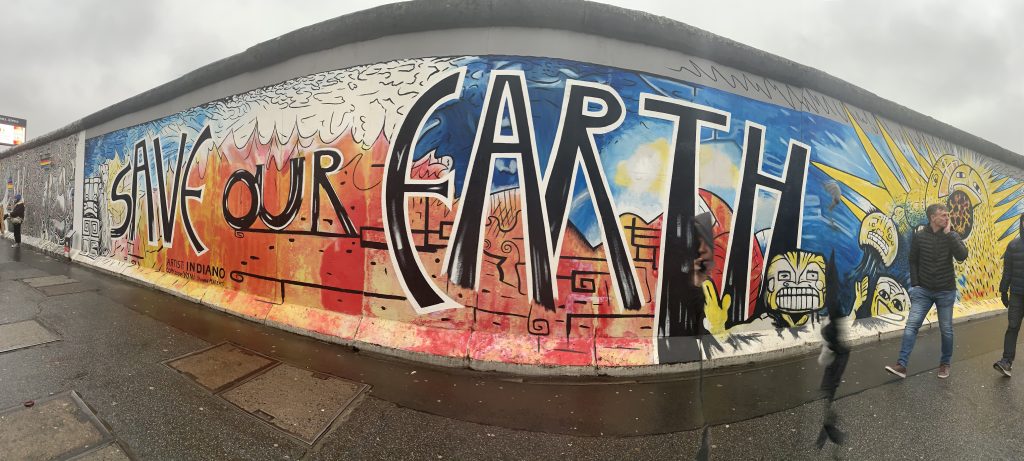We recently hopped across the Atlantic Ocean for the first time since the pandemic began and spent a little over a week in Switzerland and Germany.
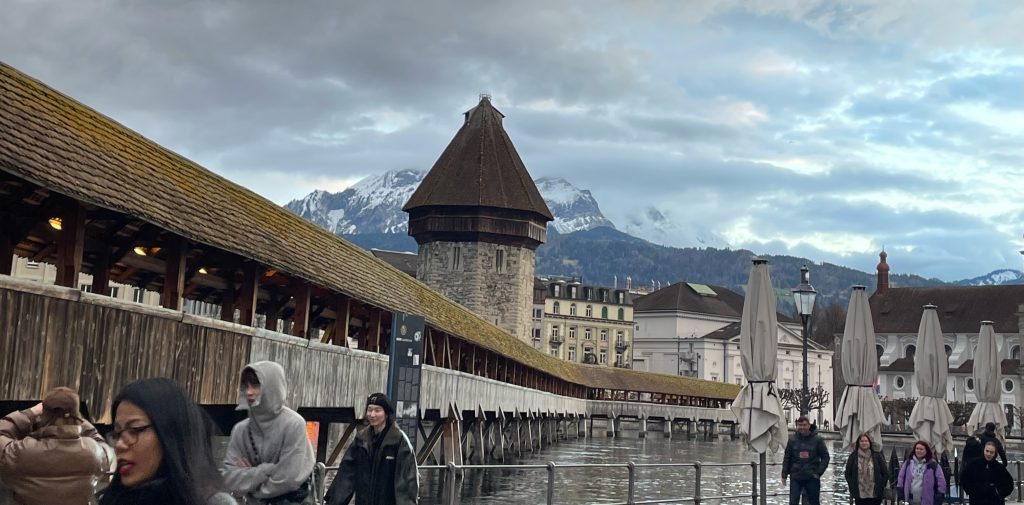
Pre-kids, we had been to Germany, but not in a long time. In fact, the last time I was in Berlin, the Berlin Wall was still up so obviously, a lot has changed…
One of our kids has studied German in school for the past three years, and it seemed like a good opportunity for him to see the culture first-hand and practice the language outside of the classroom. So off we went.
But before we hit the ground running in Europe, here are a few notes about our pre-trip planning…
Two months out:
In planning and booking flights and lodging, husband Tom put a lot of thought into how we could get there and around in a way that no one’s head would explode – ours and our kids. Before we had kids, we were always on a forced march, and have tried to dial it back to make adventure enjoyable for our whole neurodiverse family. In booking flights and lodging, we were seeking to strike a balance between seeing enough to give the kids a flavor of both countries without wearing them out and leaving them with a negative impression.
Two weeks out:
As I mentioned in a recent blog, we put together a visual guide that included our plans and possible activities for each stop on our journey. We merged pictures of cities in which we’d stay, hotels and rental units we had booked, attractions we might visit, modes of transportation we planned to take, and food we might eat, with chunked descriptive text (all found online) and links in case readers wanted more information. It took about 90 minutes to put it together.
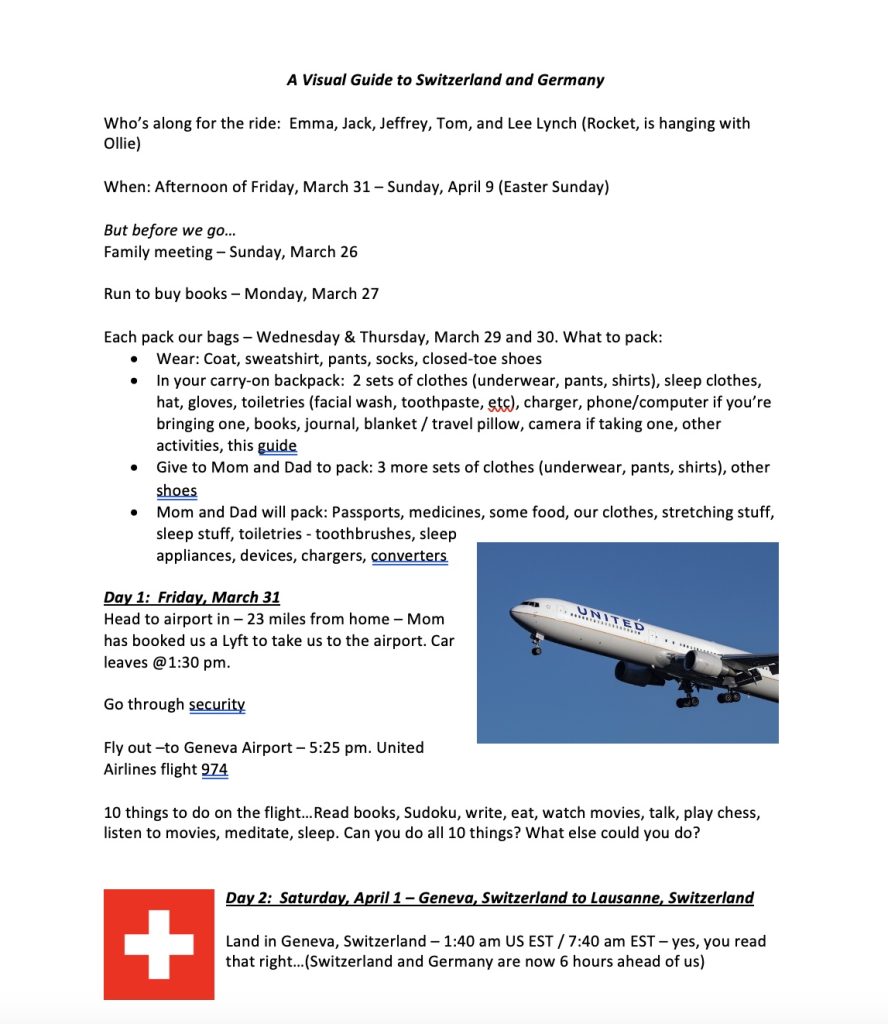
I invited the kids to be part of the creation of the visual guide, and our daughter dove in – researching and sharing places she found that she or one of her brothers might like, and her help gave me invaluable insight that I otherwise would not have had.
I started to look into family passes for different parts of the trip, and was able to reserve the Swiss Travel Pass (also called the Swiss Family Travel Pass), which gave us access to nearly all transportation (trains, buses, metro, funiculars, ferries), museums and other attractions throughout the country free of charge or at a significant discount. It wasn’t cheap, but considering the cost of EVERYTHING in Switzerland, it saved us twice as much as we paid for it.
One week out:
We held a family meeting about 5 days before our trip, walked through the visual guide, and talked about which activities were of most interest to each of us, then I revised the guide to reflect preferences at each of our destinations. We also talked about what each person would need to pack and when, as well as what we could do during the overnight flight to Switzerland.
Five days out, I filed and was approved for a TSA Cares request, which provides assistance to travelers with disabilities and their families. Essentially, it allows you to move to the front of the security line at a U.S. airport. The approval came through the same day I filled out the request – our tax dollars hard at work!
48 hours out:
Everyone was responsible for packing their own carry-on bag, which included two changes of clothes, a book, device, charger, and toiletries that could be taken onto an airplane (no bottles of liquids more than 1.5 ounces). Our carry-on bags of course included the passports, tickets, and money and we packed a larger suitcase with extra clothes to check at the airport.
We also pre-booked a cab to take us to the airport and placed a vacation hold on our newspaper and mail delivery.
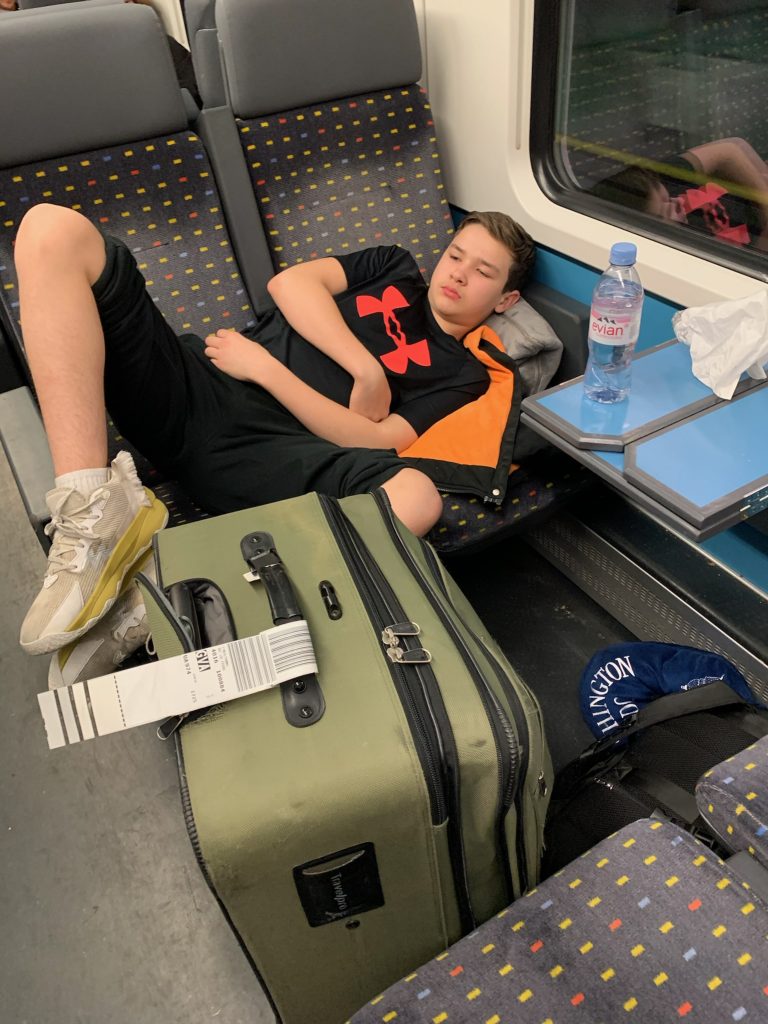
Day before:
We talked through with the kids the plans for travel the next day, from the time they finished school, to cab pick-up, check-in at the airport, the process for going through security, and what we would do waiting to board the flight. We also talked about what we would do, and what we would feel like (tired) when we landed in Switzerland.
We wanted them to experience as few surprises as possible, especially when they landed in a foreign country at 7:30 am local time / 1:30 am U.S. EST time. Then we answered questions and went to bed early.
On the day of the trip, we were pretty much ready to go, and holding our carry-on bags – especially those with our passports and plane tickets – close. So far, so good.
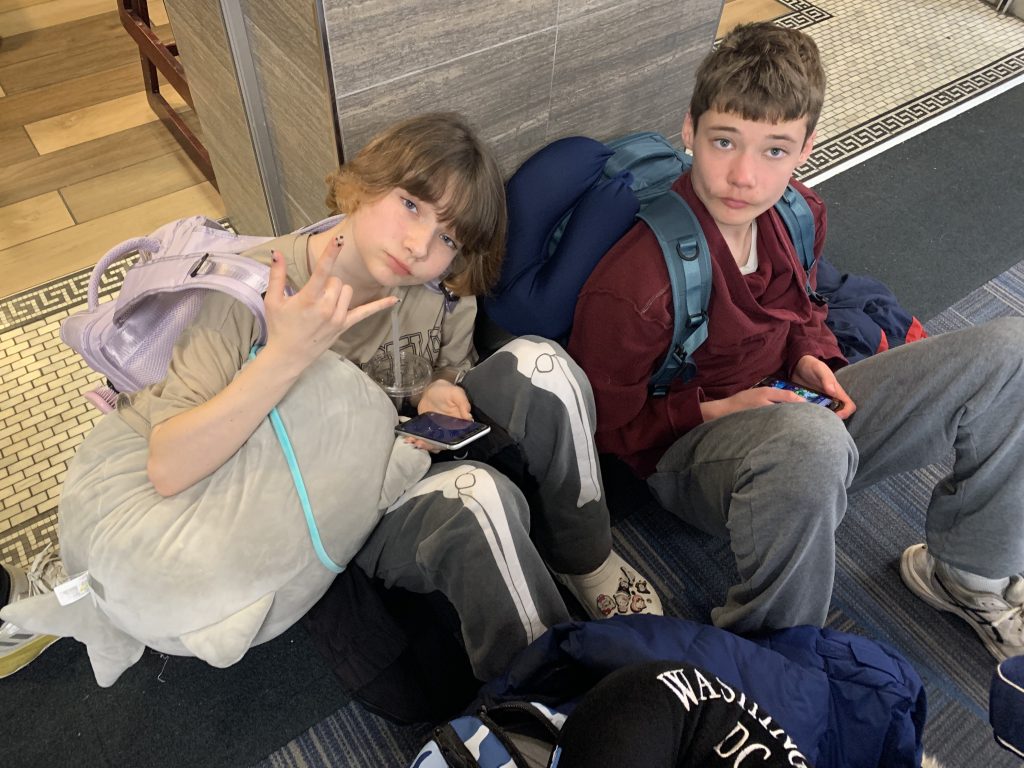
And now on with our trip…
10 Takeaways from a neurodiverse family’s week in Switzerland and Germany
1. Lausanne is an easy jumping-off point – We flew into Geneva but decided that, rather than staying there, we would go directly to Lausanne, Switzerland, a smaller city on the other side of Lake Geneva, best known for being the headquarters for the International Olympic Committee (IOC). We knew getting off the plane on an overnight flight, then boarding a 50-minute train to Lausanne would complicate things, but based on our research, it seems doable. Fortunately, it was.
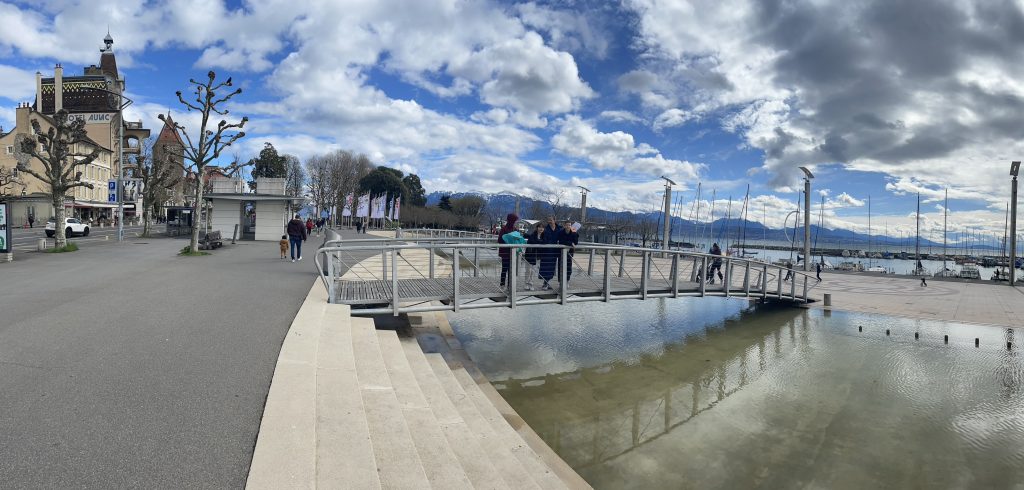
Lausanne had beautiful views from just about every street corner. Because of his setting on Lake Geneva, and directly across from France in the French Alps, it was stunningly picturesque. It also has an interesting history, that ties in with its topography – Lausanne was part of the Roman Empire, but when the empire fell and the Barbarians invaded, the residents of the city, fled into the nearby hills. Lausanne has an Old Town, which sits between the foot of the hills and Lake Geneva and has a view of the French Alps, and it has a New Town, which sits in the hills.
They’re connected by a free and easy-to-use metro system that essentially takes you up and down the hills. We spent only two days in Lausanne, and we could’ve spent more time there, but it’s a small enough city that you can get a sense of it in a short time.
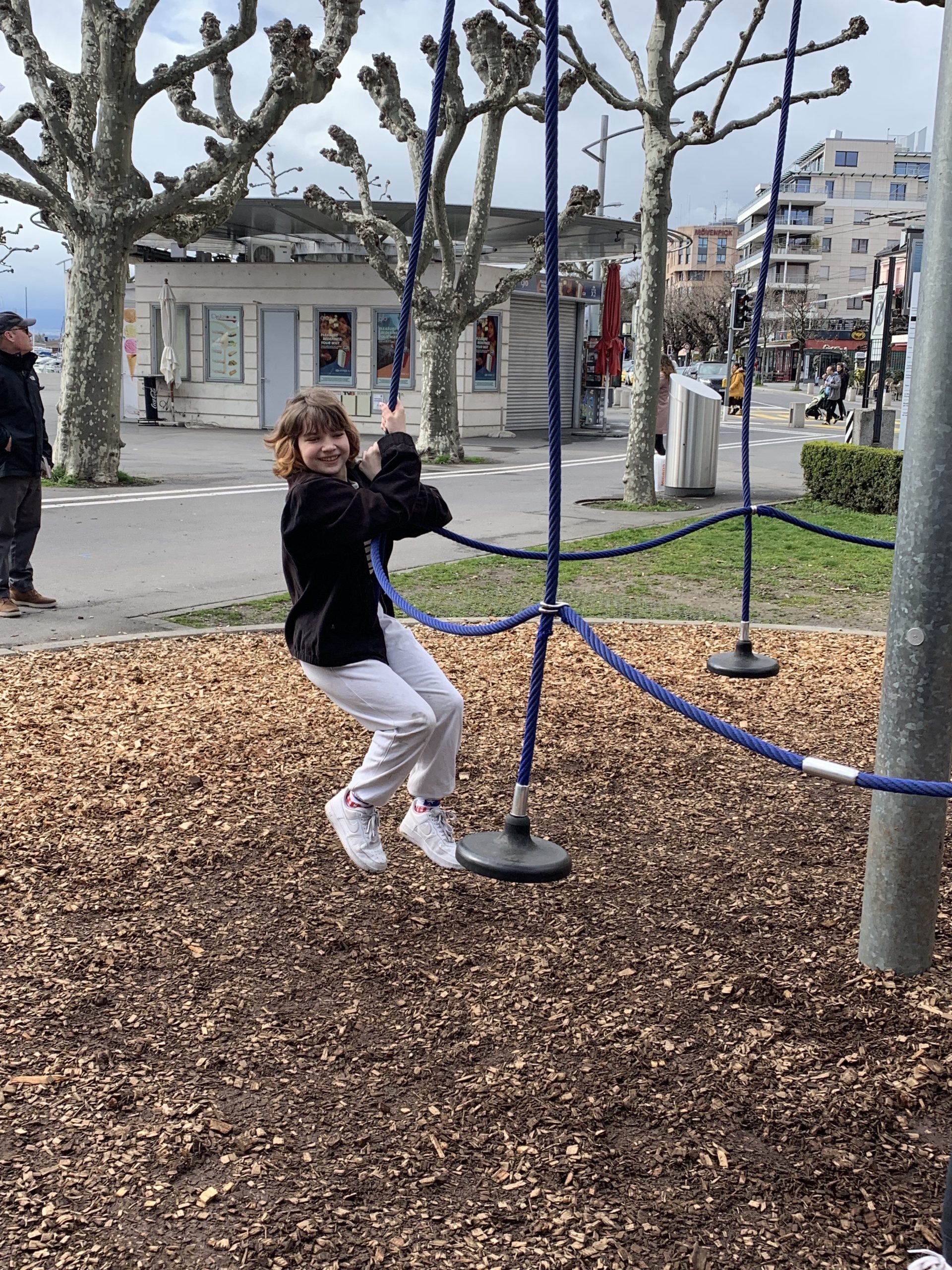
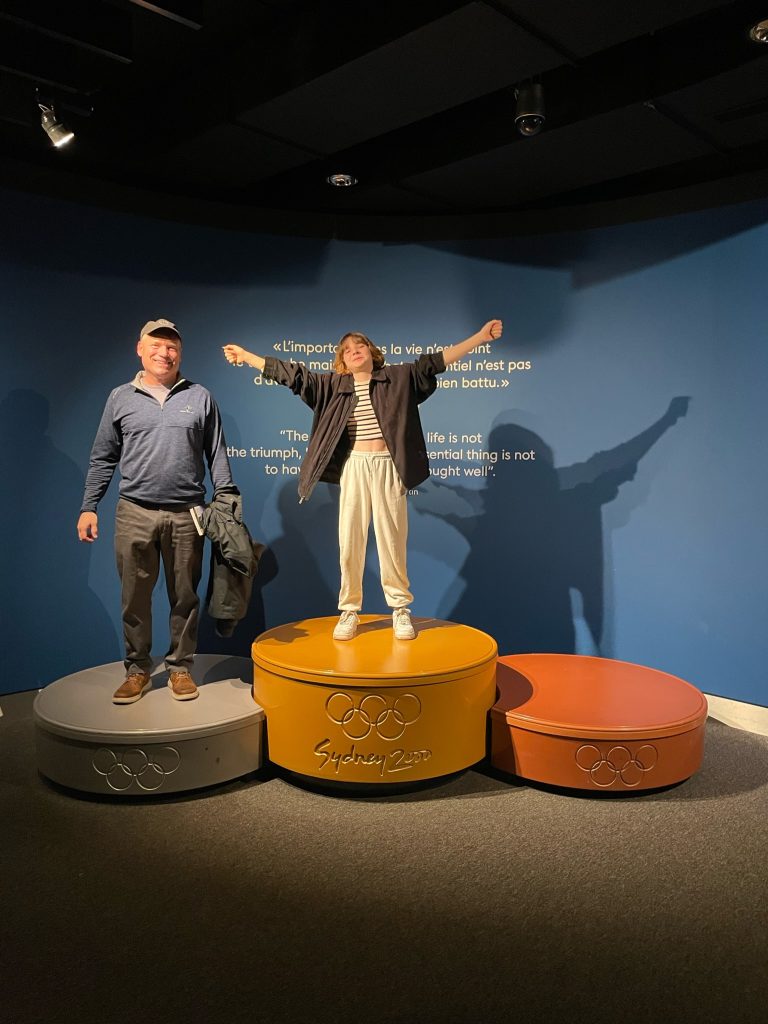
We meandered along Lake Geneva, stopping at the swings and playground along the Ouchy Promenade on our walk; visited The Olympic Museum – organized by the International Olympic Committee – which displays stories, videos, costumes, medals, and other items from the various Olympic Games and has many interactive activities for kids of all ages to enjoy; we tried fondue – a local specialty, and picked up a guide at the train station for each of our kids to take part in the Detective Badger scavenger hunt, an activity put together a family-run sightseeing company and offered through the Lausanne Tourism Bureau (which told us that cities across the country offer local Detective Badger guides). The scavenger hunt is well done, but we only had a few hours for it. Because it takes you through much of the city, you could probably spend the better part of the day on it. Lausanne was charming and quaint, truly beautiful, and while it is officially French-speaking, everyone we encountered spoke English and was friendly and willing to let us pet their dogs. Great start to our trip.
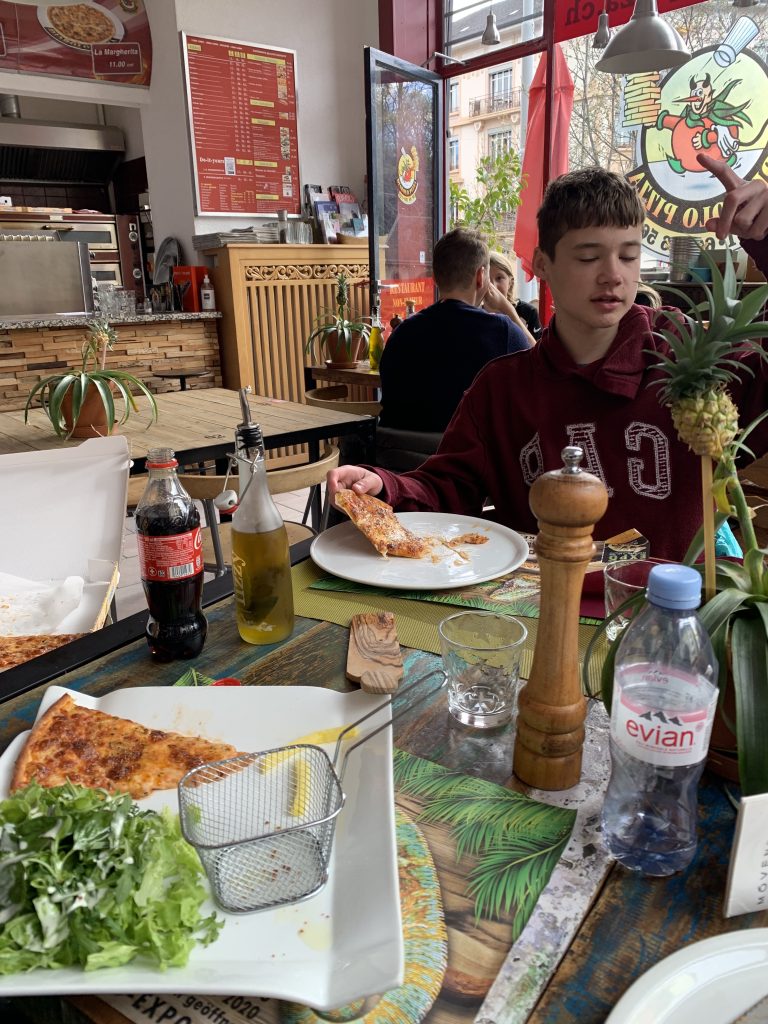
2. Let them eat pizza – everywhere – After arriving in Lausanne, at which point we had been traveling for about 18 hours and hadn’t slept much on the plane, we took a quick nap, and everybody got up hungry. We had talked about the kinds of foods we would experience in Switzerland and Germany and went to a German restaurant near our house, but our first meal in Lausanne was our chance to see how our family would do with the local food. Two of our kids eat the same foods just about every day and are always hesitant to try new foods.
We took a family vote and settled on an Italian restaurant right down the street from our hotel. The menu taped to the front window had pictures of the restaurant’s food and much of it looked like something they could get it home, which was important to them. They also like the name Diablo Pizza, and while that’s an arbitrary reason to pick a restaurant, we wanted a good experience to start off the vacation. Fortunately, the restaurant offered options for everyone – from pizza to pasta to salads. Jeffrey likes pizza if it’s prepared exactly the way he expects. We convinced him to try the Pizza Margherita since it’s essentially the cheese pizza he was at home. He was hesitant but agreed. And he loved it.
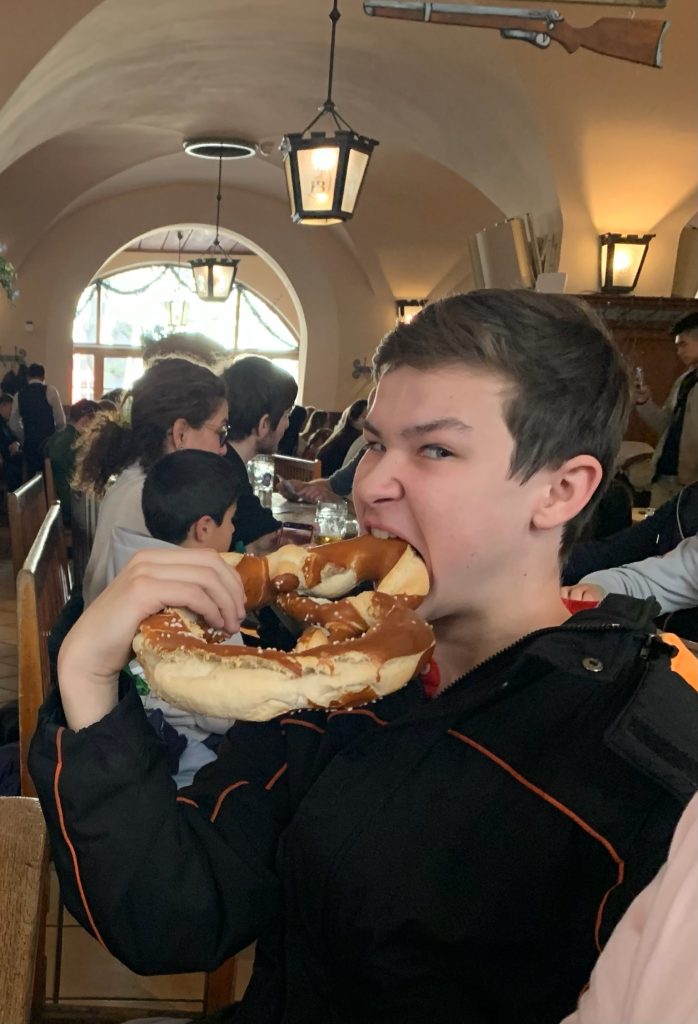
For the rest of the trip, he was on a Pizza Margherita taste-testing mission. Everywhere we went in Switzerland and Germany, Italian food was nearby. And Pizza Margherita was always on the menu. Normally we would not let Jeffrey eat Pizza Margherita eight out of nine days, but on this trip, it became his default, and we were OK with that. Same thing with Jack and Pasta Napoli, which was a lot like the pasta he makes just about every day at home. We stuck with these go-to meals, asked them to try new foods each day, and went with this approach throughout the trip. They tried some local favorites, like pork schnitzel bratwurst and we called it a success.
3. Pilatus climbed to the top of everyone’s list – After visiting Lausanne, we took the train to Lucerne, Switzerland (Luzern in German, its official language) – a beautiful town nestled in the Swiss Alps.
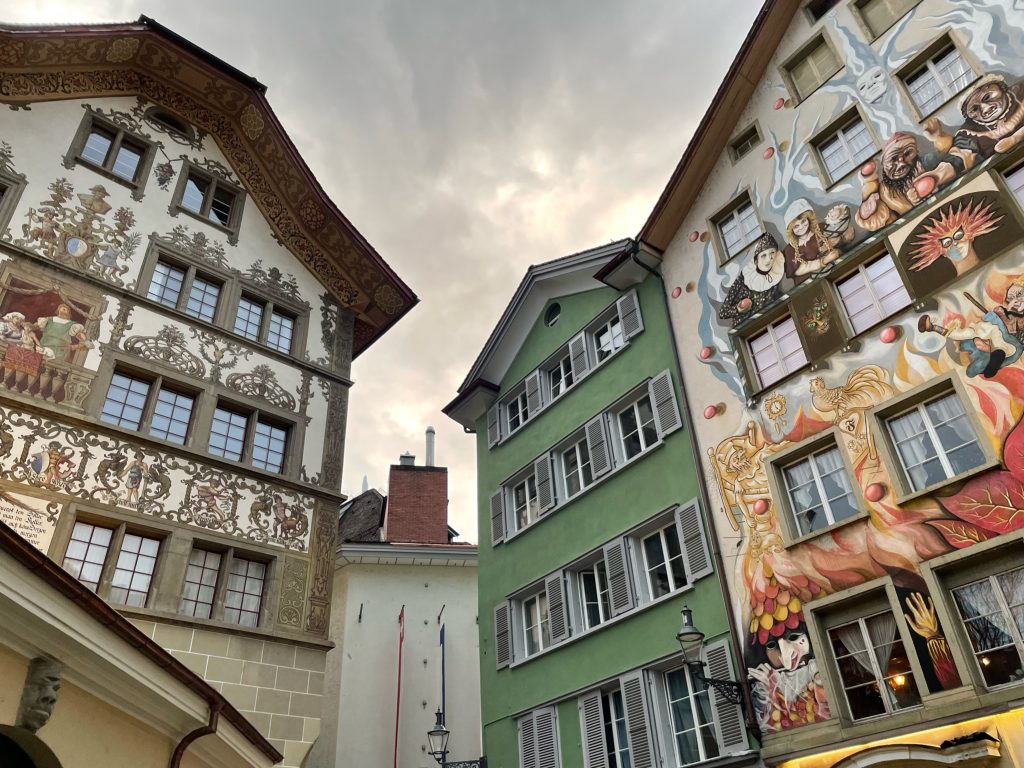
Lucerne itself was absolutely worth the visit for many reasons from its unique bridges connecting the Old Town and New Town, its interesting museums – such as the Swiss Transport Museum – which was a favorite for our kids and impressive for adults because of its breath, because of the many good restaurants in the city, and because you could take ferries and trains to the nearby Alps.
We spent two days in Lucerne, and the highlight of our stay there – as well as of the entire trip – was our visit to Mount Pilatus.
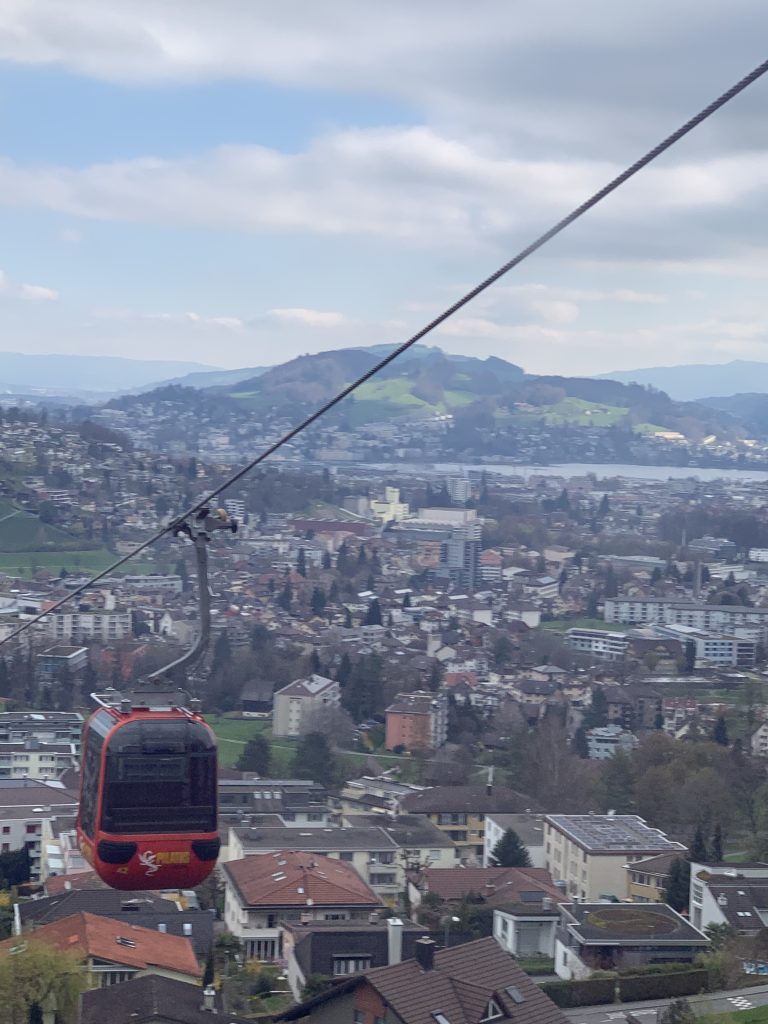
Pilatus is situated just 15 minutes outside of Lucerne and is accessible from various nearby towns. There are numerous ways to get there – the official Pilatus tourism site provides options. When you get to one of the nearby towns (by ferry, rail, or bus), you take either a cogwheel train – the steepest in the world but only operating from May to November, or an airway gondola system, which operates all year round. To get there from our rental unit we took a bus to the Lucerne Railway Station, then another bus to Kriens, the town around Pilatus, then walked 15 minutes to the air gondola station.
We picked up our tickets there and took a gondola that fit four people, and at the next transition area, took another air gondola that fit 20 people. It sounds like a lot of effort, but from our door to the top of Pilatus took only a little over an hour. It was cloudy the morning we made the trip, and for 80 percent of the trip, the setting was lovely but not much beyond that. But there came a point at which the air gondola broke through the clouds and what lay before us was the most spectacular scene any of us had ever witnessed. Pictures can’t do it justice.
The day before we visited Pilatus, we took a ferry from the Lucerne dock across Lake Lucerne to Bürgenstock – a mountain that rises to 874 m in elevation and is well worth a visit. You can reach the top of Bürgenstock by taking a funicular that goes almost 90 degrees up the mountain, or by road; when at the top, you can spend time wandering around the resort which features two hotels – including one built in 1873, restaurants, a spa, residences, a hiking trail, and spectacular views. But Bürgenstock was just a warm-up for Mount Pilatus.
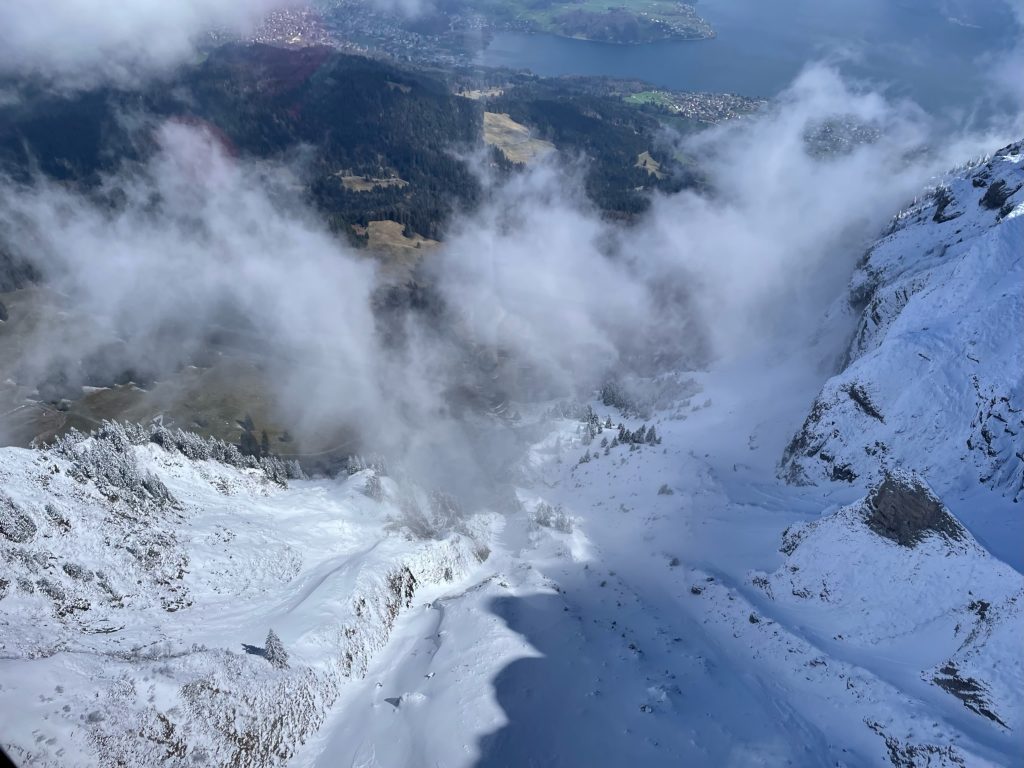
The view from the gondola en route to Philates was filled on the front end with the face of Mount Pilatus, and from the back, we could see across what seemed like the entire Alps and into the valley below. We couldn’t of course – the Alps are the most extensive mountain range in all of Europe stretching across seven countries and 65 percent of Switzerland. As the gondola traversed the last several hundred meters of the trip, we looked around and could see seemingly impossible things on the mountaintop, including flags that have been planted by climbers who had reached what appeared to be unreachable areas, and a church built on what seemed to be an inaccessible peak. Soon after we ascended to the top of Pilatus, the clouds cleared, and we could see across what seemed like the entire Alps. Since we only had a few hours there on the day of our visit, we had a lunch of sandwiches from the restaurant on site and walked around the outdoor viewing area and downstairs indoor viewing room.
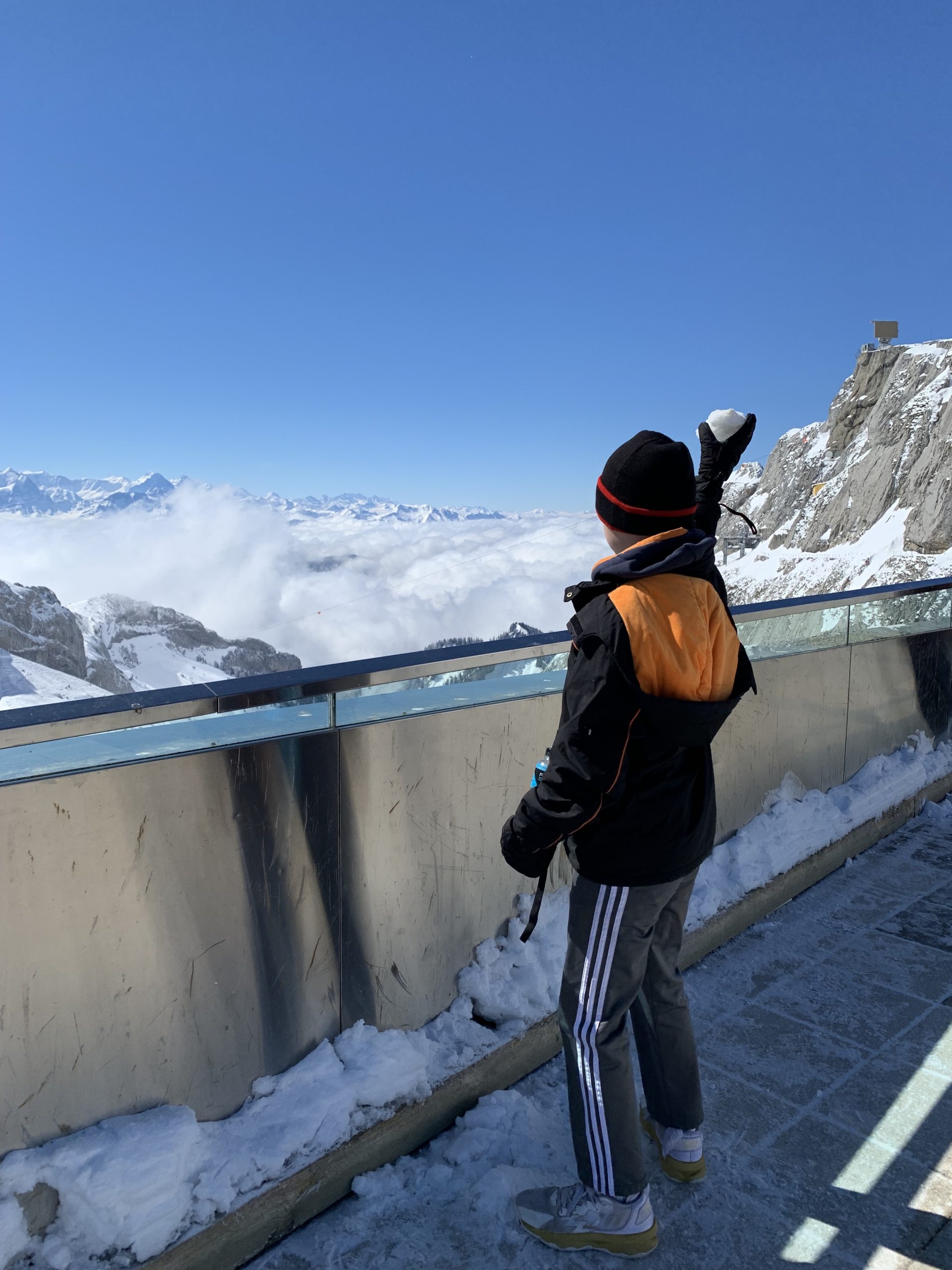
The kids had a snowball-throwing contest to see whose snowball would roll furthest down the mountain, and we watched birds soar and dive around us and agreed that being able to fly around this spectacular setting is the only thing that could make it better. We put on our bucket list, staying in one of the hotels at the top of Pilatus. Having purchased the Switch Travel Pass made the excursion less expensive – the bus rides to and from Kriens were free, and the air gondola rides were 50 percent off. But it was still a fairly expensive excursion, considering the cost of everything in Switzerland is pretty high and the fact that, despite packing gloves and hats in our luggage for every member of the family, only Tom and I brought them on the excursion, and we had to buy them for the kids at the base camp area or listen to a lot of complaining when we got to the top.
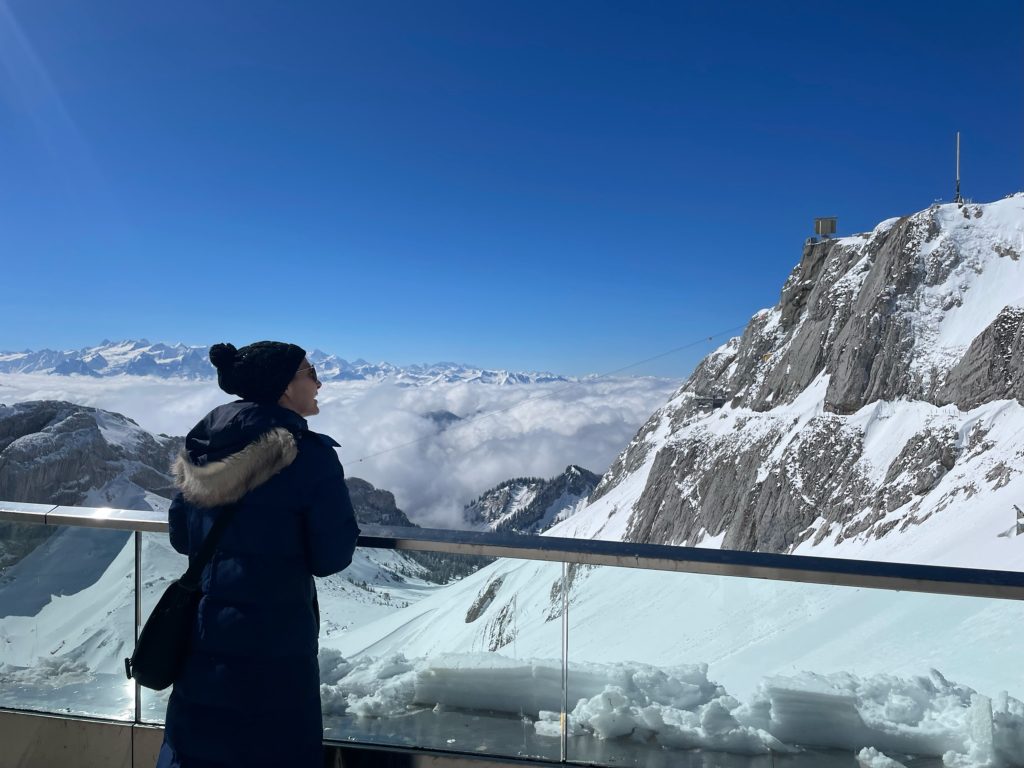
It was though worth every penny – it was unanimously for our family a highlight of the trip and the most spectacular thing any of us had seen in our lives.
4. Anxiety – learn the language, use the language – One of our kids has been struggling with anxiety in recent years, and it became clear on the trip that part of what was driving her anxiety at that moment was not knowing the local language. I encouraged her to use her phone to look up local phrases however, once her phone was stolen (see #6 below) on a bus in Lucerne, that was no longer possible. From Lucerne through the rest of our trip, we were going to be staying in German-speaking areas, so she asked if we could find her a German phrasebook. After leaving Lucerne we took the train to Zürich before taking a high-speed train to Munich, Germany, and in a bookstore in the Zurich Railway Station, we bought a German phrasebook.
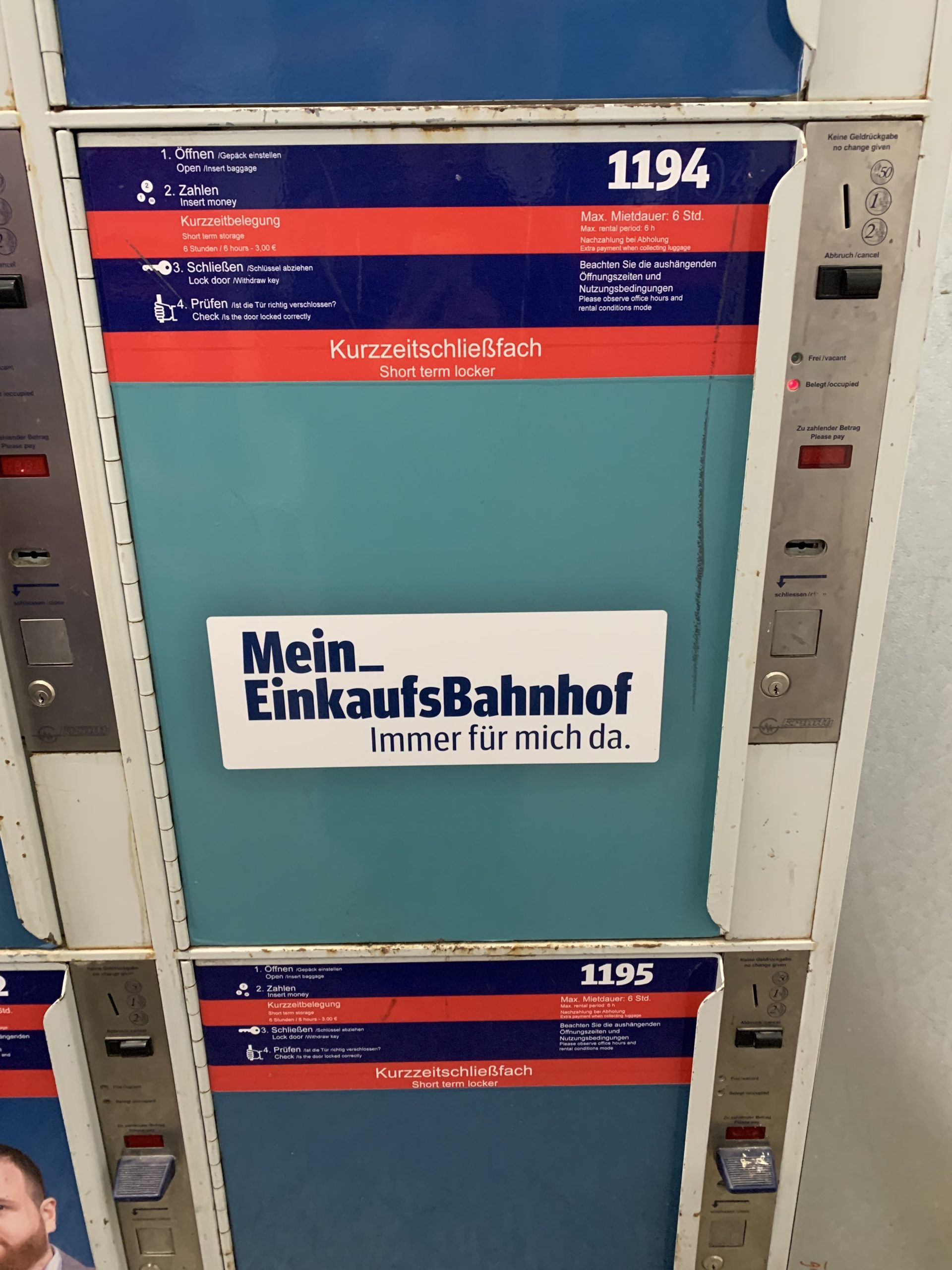
She spent the rest of the train ride studying her phrasebook and carefully tried a couple of German phrases at the Munich Railway Station. As she got more comfortable trying out new phrases throughout Munich and Berlin, her anxiety level seemed to decrease significantly. She wasn’t having full-on conversations with locals in German, but she was able to understand German words posted around her on buses, in train stations, and in museums, and locals seemed to understand that she was trying to use their language, helped her with words and often responded back politely in English. For future trips to foreign-speaking countries, I will definitely pick up a few phrase books to try to help our kids get ahead of anxiety.
5. Switzerland – expensive but easy – We loved our time in Switzerland, and under different circumstances would’ve enjoyed staying longer. There is still so much more to see – we only got to see Zürich for a few hours and did not even get to visit other places that are supposed to be wonderful, such as Zermatt, Bern, and Basel. But the cost of everything in Switzerland was even higher than we were expecting due to several factors. The country is not on the euro – their currency is the Swiss franc, or CHF, and this results in import taxes on many of their goods.
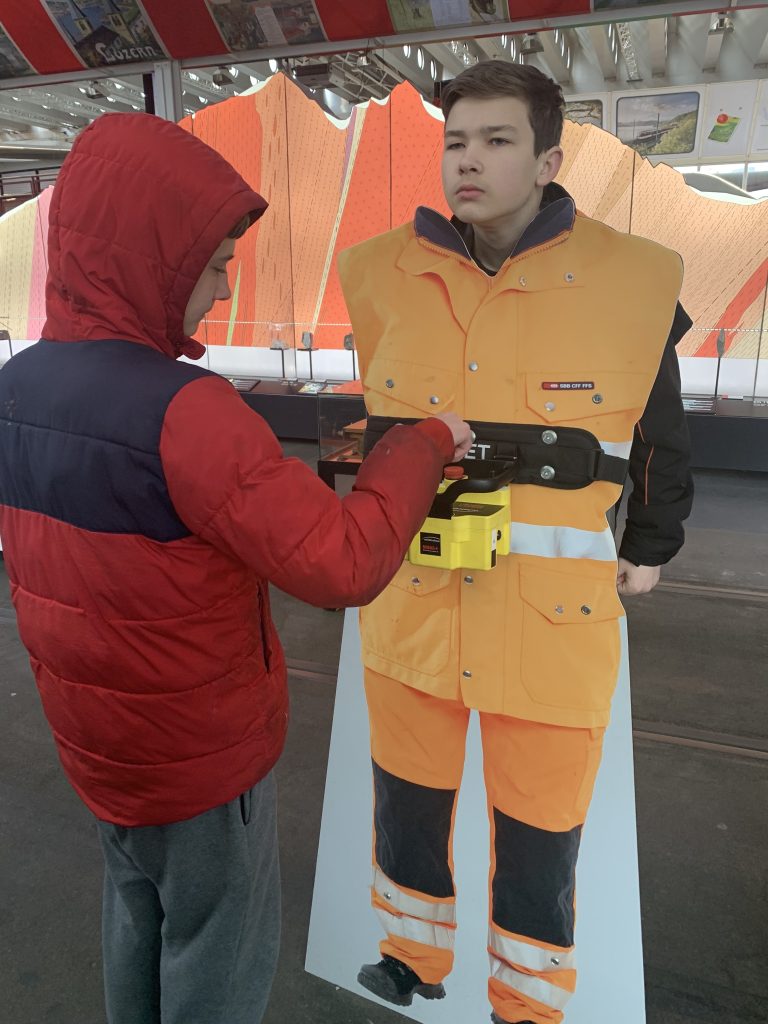
Additionally, they have also invested significant amounts of money into their transportation infrastructure, which makes it easily accessible – despite its vast mountain range – by plane, train, bus, and on foot. That all comes at a cost. Finally, salaries are higher in Switzerland – in fact, Germans who live near the Swiss border often come to Switzerland to work, because they get paid more. Any type of service will cost significantly more in Switzerland. Where we spent $50 on lunch for a family of five in Germany, we were often spending $125-$150 in Switzerland. A few notes…the previously mentioned Swiss Travel Pass did help us keep costs down. Additionally, we mostly stayed in rental apartments and admittedly could’ve eaten in our apartments more often.
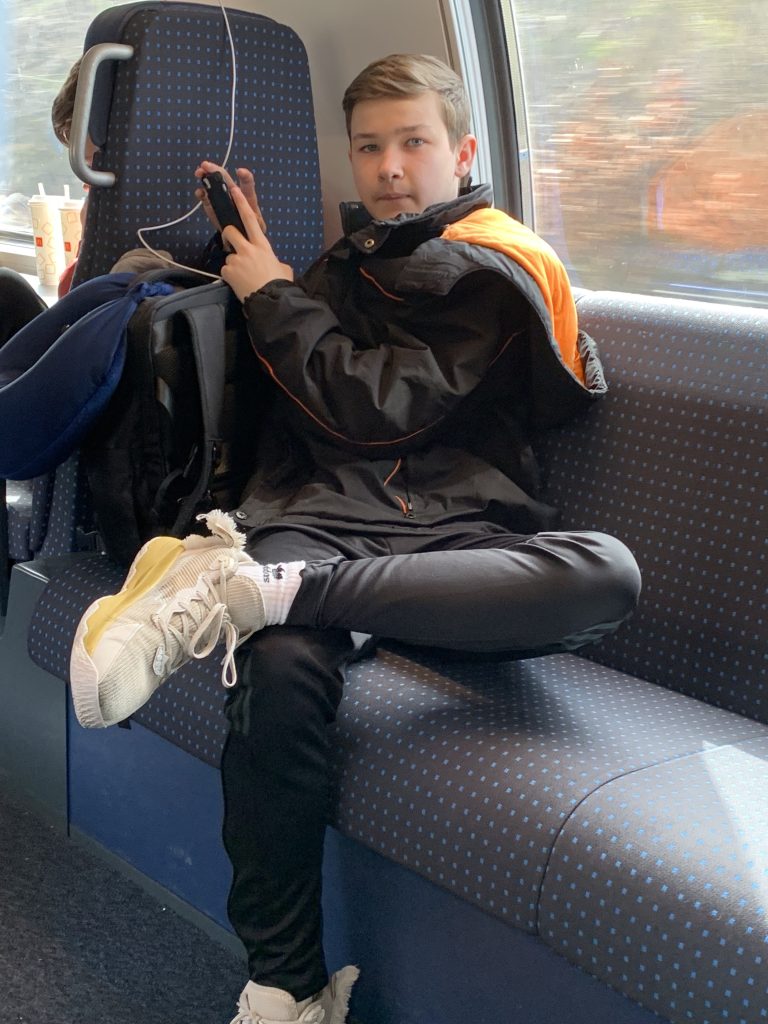
6. Cell phones – Vital and vice – Each of us had a cell phone on the trip, and that proved to be both a blessing and a curse. Before we left, we ordered the international plan for each phone, so we could keep in contact with each other. Throughout the course of the trip, we ran into many technological challenges. Those included: one of the kids leaving their phone on the airplane as we arrived in Geneva (we had to work with the airline staff to find and retrieve it); changing networks every time we entered a new city and having to figure out how to access that new network; networks that provided spotty service throughout a lot of our trip; the constant draining of our batteries as we used our phones to order tickets, check train and bus schedules, and for directions (some of us were using our phones to play video games and stream calls with friends…); losing our portable chargers; and then finally having one of our phones stolen on a bus.
The phone theft incident occurred in Lucerne, Switzerland when a woman, who apparently was only acting very drunk, staggered down the bus, and stumbled onto my daughter, stealing Emma’s phone as she righted herself. None of us realized what it happened until 20 minutes later, and by that point, the woman had already disabled the Find My Phone app. We also had issues finding electricity converters that would work with our phones, since Switzerland uses different converters than Germany (and other countries in the EU), but many places in Switzerland appeared to have EU-style outlets. Never an hour went by when we didn’t both depend on our phones and feel frustration from them. Even on the very last leg of the trip – on the cab ride home – our cell phones were confounding us when Jack left his in the cab and didn’t realize it until the next morning. Despite all of this, the next time we travel, we will all take our phones again and get the international calling plan. I will probably provide everyone with their own portable charger, their own converter, and their own USB cord. Additionally, I will probably provide each kid with a debit card and be sure to provide them through text with the address of each of the places they’re staying. Having one of our children get separated from us in a foreign country without any way for us to communicate with them is one of my greatest fears, and those are the only ways I can think of, to alleviate that fear.
7. Downtime, right before adventuring, is not my friend – One thing I was reminded of on this trip, is that downtime with our neurodiverse family is not our friend, especially if it happens just before we try to get out the door or when we are out and about. Several times we told our kids to get ready to go or that we were about to move on to the next location, but then we needed more time ourselves to get organized or figure out how to proceed. And in that period, wrestling matches broke out, kids became engrossed in video games, or they started complaining. A lesson learned was to get everything ready to go and then hit the ground running.
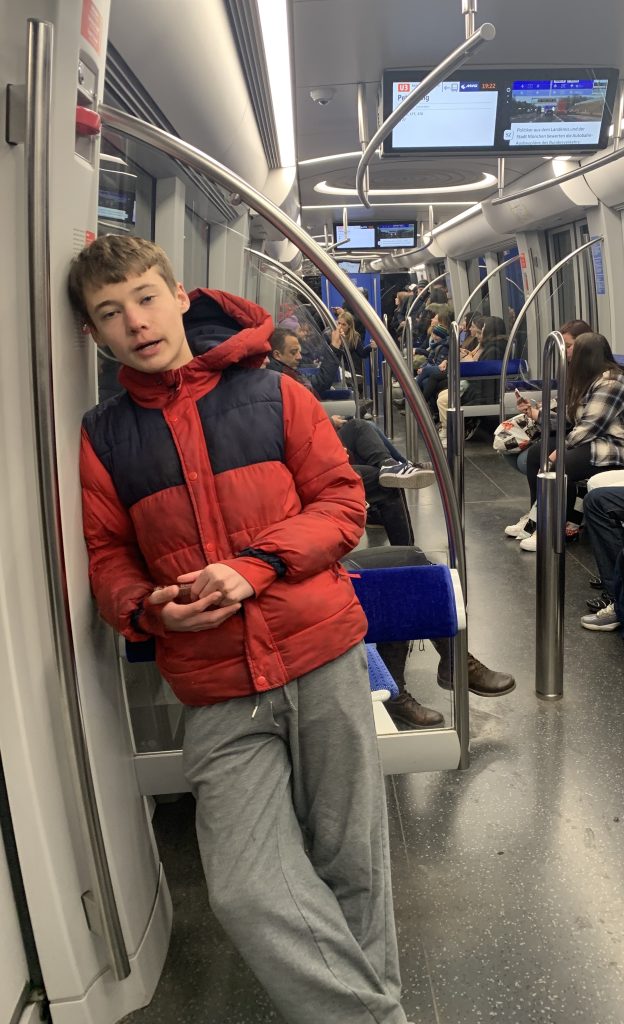
8. Get us home Jeffrey – Giving a neurodiverse kid a job during an adventure can make a big difference for him or her. Jeffrey’s job often has to do with getting us around. He has a very strong sense of direction and how different transportation systems work. In Switzerland and Germany, we often asked him to help us get from one point to another, and he was almost always right. He played this role in every city we visited and help us get around on metro and bus systems, cross country and intercontinental train systems, and walking through cities and back to our rental units. On the last day of our trip, when we were in Berlin, his role proved invaluable. Everybody’s phones had drained entirely of battery, except for Jeffrey’s, as we searched online for church services we could attend for Easter Saturday mass since we were flying home on Easter Sunday. We finally realized there were no local church services, but still needed to get back to our rental unit in Tempelhof, about 20 minutes outside the city center of Berlin, and where the Berlin airlift took place. We told Jeffrey, we need you to use your phone to get us back to the apartment. And he used Google Maps to get us walking in the right direction to the metro, on the right Metro train, and switching to the right train, then walking in the right direction from the metro to our apartment.
Honestly, we could have taken a cab, but we wanted to see if he could do it. He took it seriously, and we had to walk fast to keep up with him, but he did turn around several times to make sure we were all in view. He did a terrific job getting us through a major foreign city and safely back to our apartment. Great job, Jeffrey!
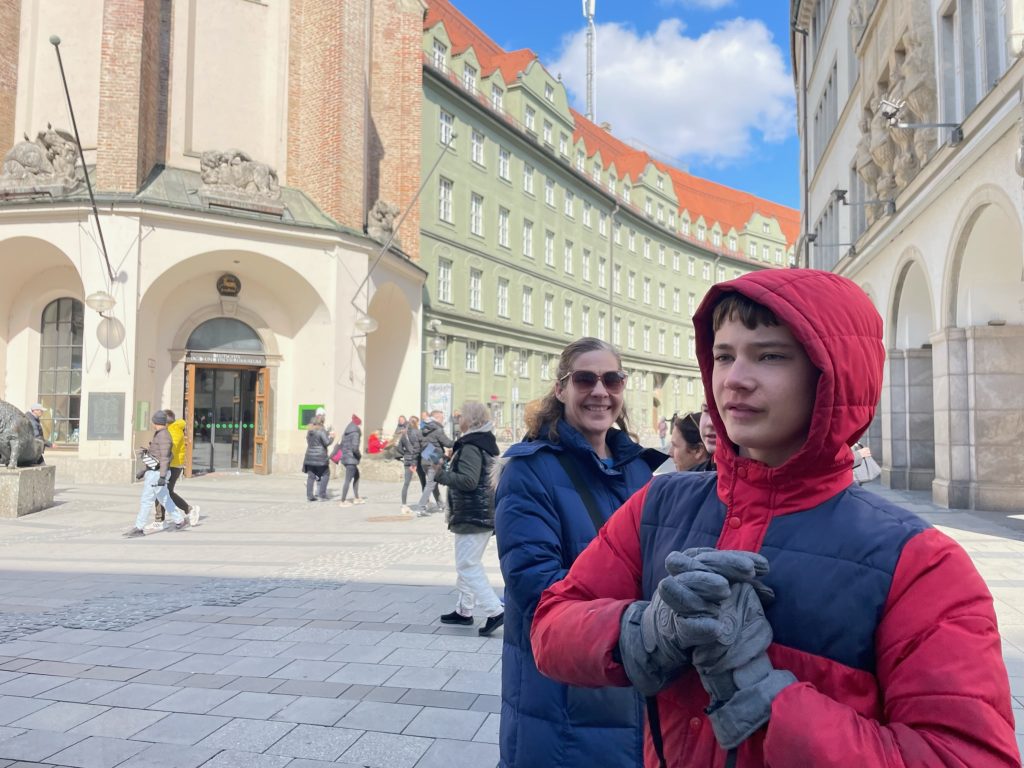
9. Germany – slightly overwhelming but fascinating – While in Germany, we visited Munich and Berlin. Germany was not as easy to get around as Switzerland had been. In Switzerland, everyone we encountered seemed to speak English; in Germany, we had many situations with locals who spoke little to no English. And understanding the transportation systems in Germany proved to be more difficult. We were still able to see each city and utilize the transportation systems and information sources available to us, and we found both Munich and Berlin to be fascinating. In Munich, we took the tram into the city center and walked around the many platzes (plazas) – from Marienplatz to Alexanderplatz to the Viktualienmarkt, and enjoyed seeing the various types of architecture (from Gothic to Renaissance, to Baroque) and palaces of the kaisers.
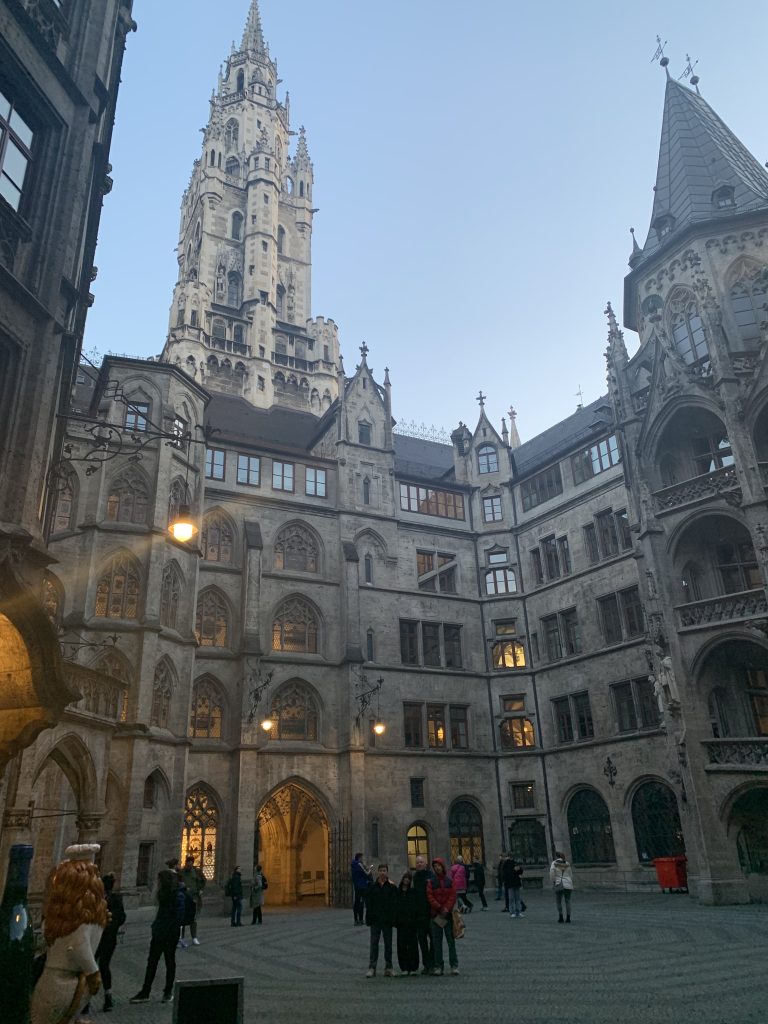
We had drinks and giant soft pretzels as we listened to the oompah band at the enormous Hofbräuhaus beer hall, which seats 7000+ people a day, and had dinner in the Ratskeller restaurant, in the underground of the 150-year-old Munich town hall and accessible through a courtyard that resembles a setting from a Harry Potter movie. We also took the tram out to Olympiapark Munchen (Munich Olympic Park) – Munich hosted the 1972 Summer Olympics, and the facilities and park are worth visiting. Located about 20 minutes outside the city center, the roof of the Olympic stadium has the appearance of waves or dove wings. We also stopped by a trampoline park nestled among the buildings in the Olympic Park, and the kids were able to burn off some energy by jumping for about 30 minutes.
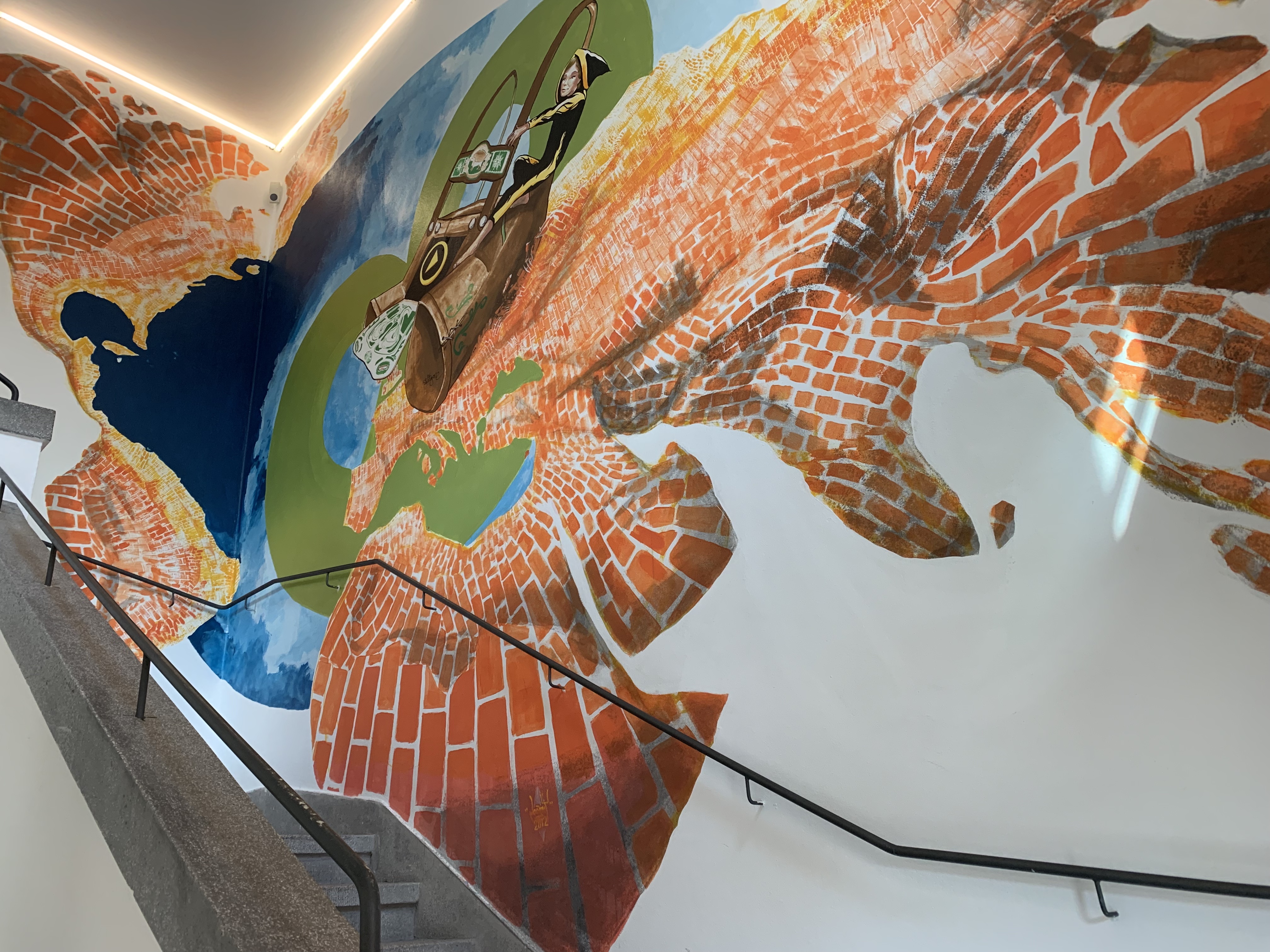
Also in the Olympic Park area is the famous Munich TV tower, which originally played a key role in broadcasting the Munich Olympic Games to the rest of the world, and today is accessible to visitors and provides incredible views of all of Munich and the surrounding areas, including the Dachau concentration camp, which lies about 30 minutes outside Munich.
From Munich, we took the train to Berlin and were able to travel in a private train car for just nine euros (about $10) extra, which made a long ride (by kid’s standards – 4+ hours) go faster. Compared to Berlin, Munich had been quaint although still, a major city. In three days we saw as much of Berlin as we possibly could using the metro system, hop on hop off bus, city bus, lots of walking, and even a taxi when necessary.
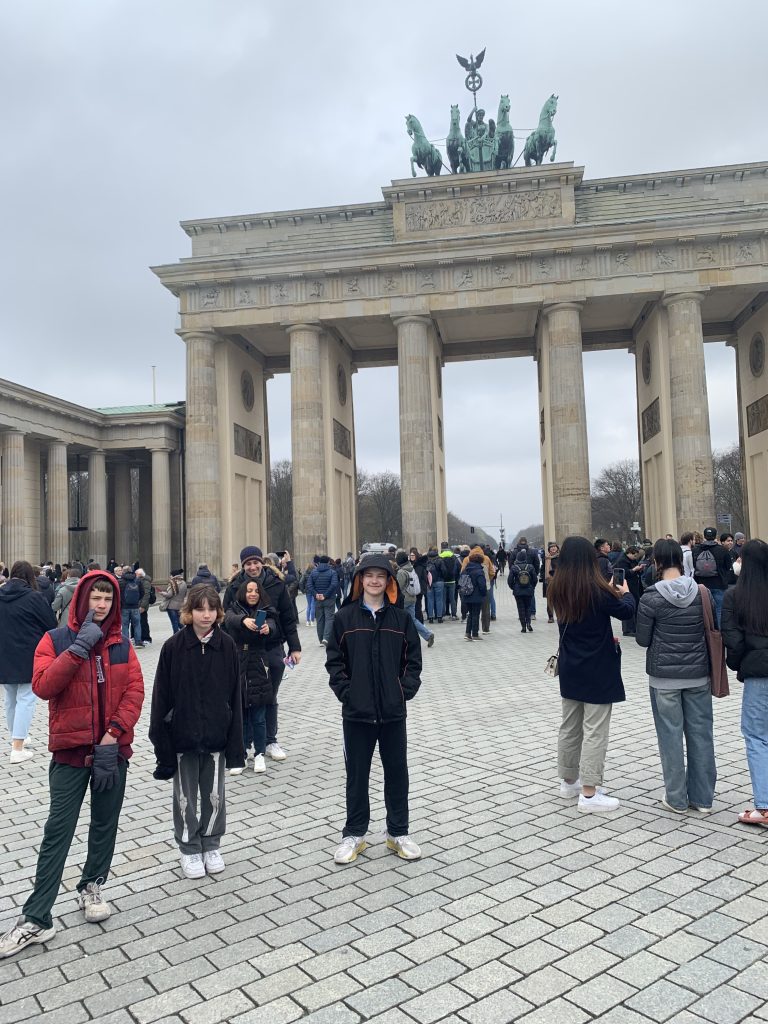
We were familiar with the history of Berlin – as the capital of the country, and the largest city in both Germany and the EU, Berlin has been in existence since the 1200s, and has held a rightful place in the world as a hub of science, art, and philosophy, and was culturally progressive in the early 20th century, then the capital of Nazism in the 1930s and 40’s and the dividing line between East and West throughout the Cold War. I had been there many years ago when it was still divided into East and West Berlin. It dawned on us as we were there that there is probably no city that has as much modern-day world history in one place as Berlin.
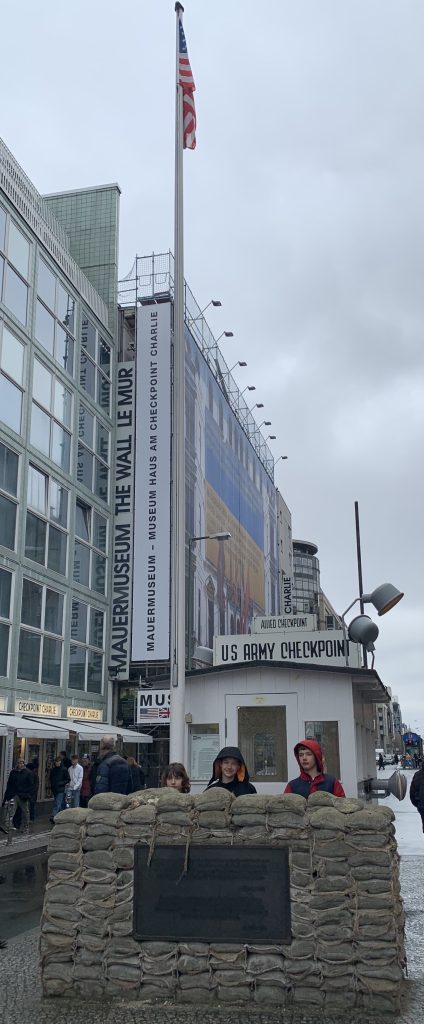
From the Brandenburg Gate to the Reichstag, Checkpoint Charlie, and, of course, the Berlin Wall – some of which still stands – and its East Side Gallery and The Wall Museum, to the city’s more than 170 museums, and hundreds of monuments memorializing World War II and the Cold War and honoring the people who lost their lives during these traumatic times – all were major parts, but only parts, of Berlin‘s story.
The city’s seemingly endless array of sites includes Museum Island – five world-class museums literally on an island in central Berlin that hold some treasures rightfully owned by Berlin and Germany but also many that belong to other countries around the world and stolen during different parts of Germany’s history; the Tiergarten – the former King’s hunting ground still maintained as an enormous greenspace spreading between the Brandenberg Gate and Berlin Zoo (Tiergarten also refers to the parliamentary, governmental and diplomatic district around the park); 13 palaces and the Kurfürstendamm (aka Ku’damm) shopping area – a two-mile stretch of wide streets and tall trees first built to serve as the boulevard down which royals would ride their horses to access the Grunewald hunting lodge, and now is one of the most famous shopping avenues in all of Europe.
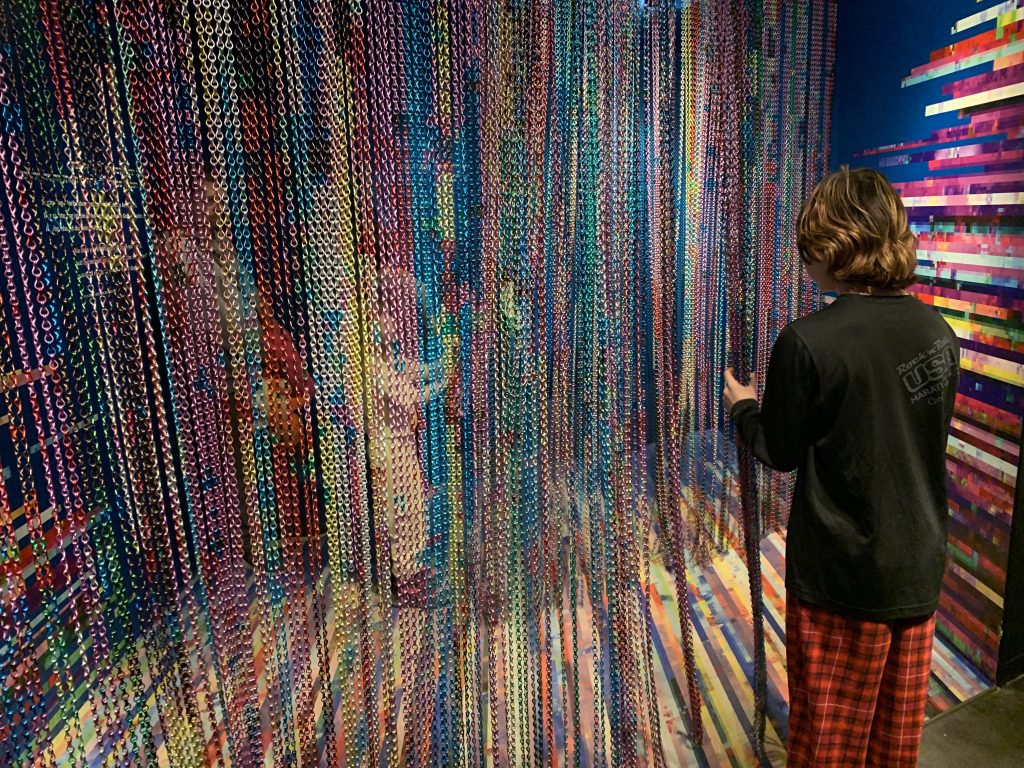
A highlight for us was the Jewish Museum Berlin, which tells the story of the social, political and cultural history of the Jews in Germany from about 300 AD to today and sought to show for the first time in postwar Germany the impact of the Holocaust on Jews and their families throughout the country and beyond. The entrance to the museum is the site of the original Prussian Court of Justice. Having been to the Holocaust Museum in Washington DC several times, we weren’t expecting something to compete with or even exceed that, and it’s hard to say one is better than the other, because they are very different, but the Jewish Museum Berlin was an incredibly worthwhile experience.
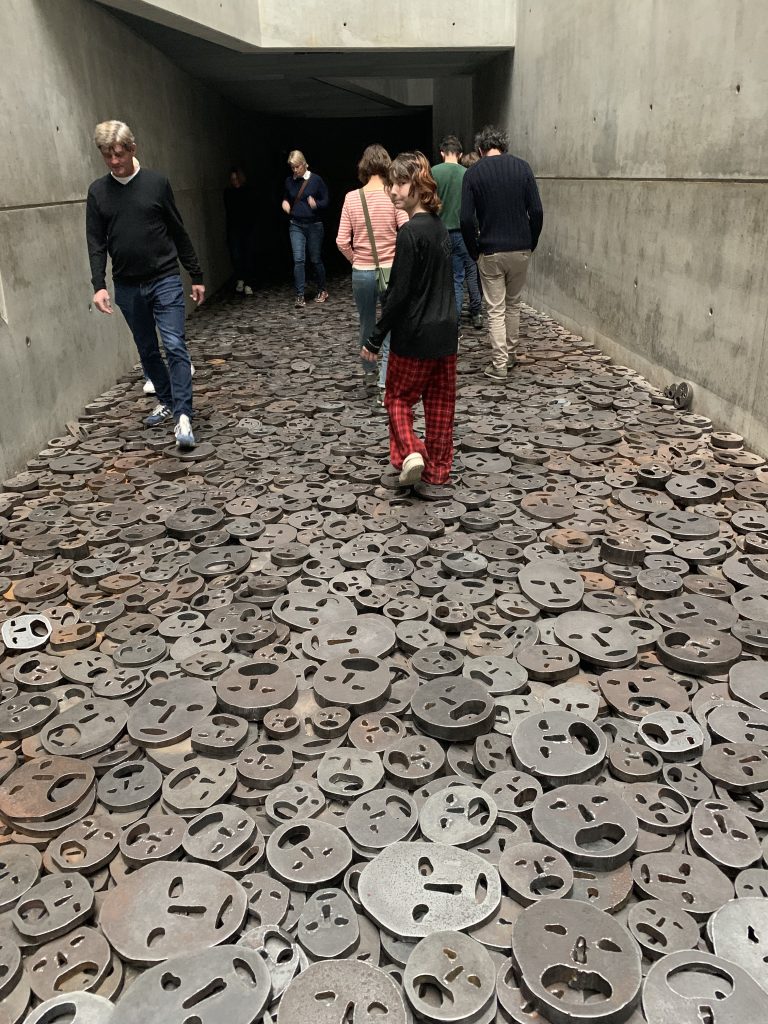
The museum had many interactive exhibits for all ages, and two stand-out sections for us were, in the room called Catastrophe, the ceiling-to-floor flags that progressively by year show the hundreds of decrees and measures issued against Jews from 1933 to 1945, and the installation Shalekhet (which means Fallen Leaves), which includes more than 10,000 round heavy iron plates that look like faces with open mouths that cover the floor and make a painful, unforgettable sound as you walk across them. We gladly would’ve paid to enter the museum, but it’s free to all visitors.
One note about Berlin – there is definitely a gritty aspect to the city, and in some areas, it goes beyond gritty to dirty, but we told her kids it is a major city, and you would see that in other major cities around the world as well.
10. Like a Shakespearean play, there were emotional highs and lows, but in the end, Switzerland a Germany provided unforgettable memories – Our journey through Switzerland and Germany was filled with emotional peaks and valleys.
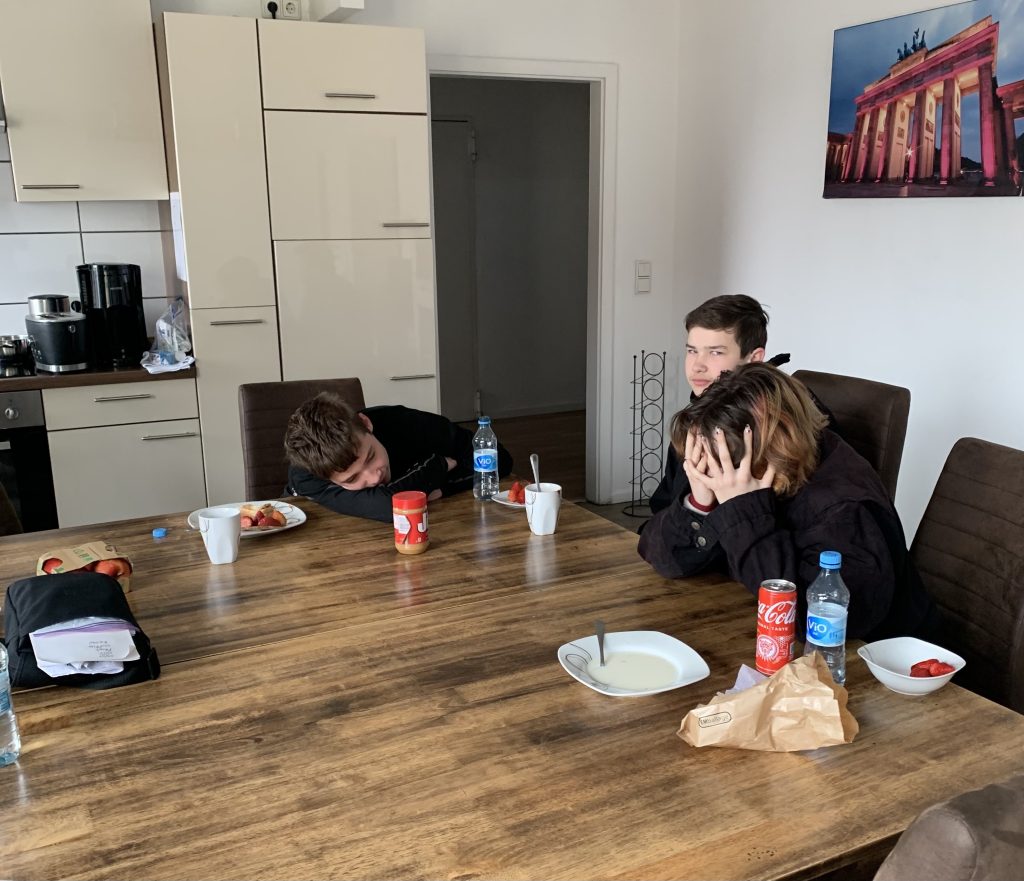
There were times our kids were exhausted, overly hungry, or on a sugar high; there were plenty of times when we argued with each other and the kids with one another; Jeffrey told us he thought we tried to do a little bit too much and the trip was a bit too long, and Emma said, while she’d had a really good time, she couldn’t wait to go home; Jack struggled with the noise and crowds in the cities, and just wanted to wear headphones a lot of the time, which we now know has to do with auditory processing disorder. The crying and frustration as we tried to make a trip to one of Berlin’s three cat cafés to satisfy one of our kids on the last day of the trip but were not able to get in because reservations were required, was probably the peak of our frustration.
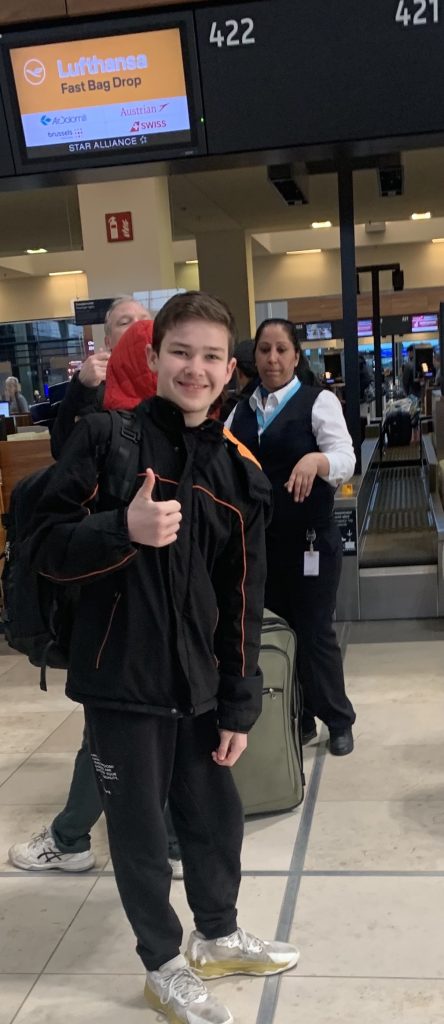
But there were many smiles and much laughter, and each of us came away with some new favorite places. The Alps were at the top of everyone’s list, the trampoline park in Munich was a blast for the kids, and Berlin was fascinating for all of us. European train travel is always a great way to go from one place to another and we marveled at the ease of use of their transportation systems; the lakes, mountains, valleys, vineyards, architecture in the old cities, and centuries-old bridges were all beautiful.
After we returned, I asked Jeffrey if, despite the frustration and arguing during the trip, he thought it was worth it. And when he said, “Well it was a memorable trip,” I knew we had done something right.
To sum it up…to rocket around Switzerland and German, don’t leave home without…
-Holding a family meeting using a visual guide
-Reserving the Swiss Travel Pass
-Visiting the Alps
-Cell phones with international calling plans + portable chargers
-Swiss and EU converters
